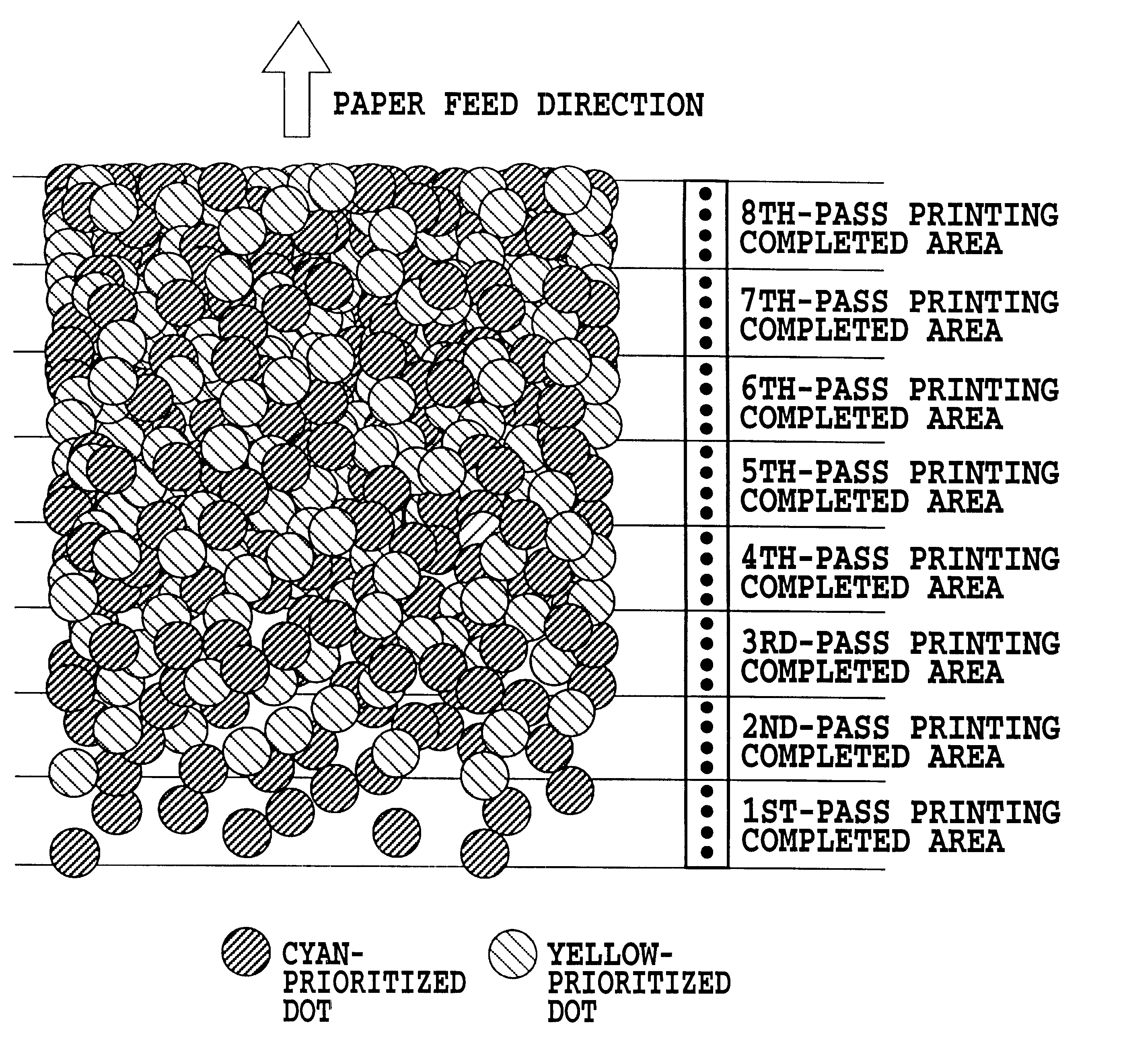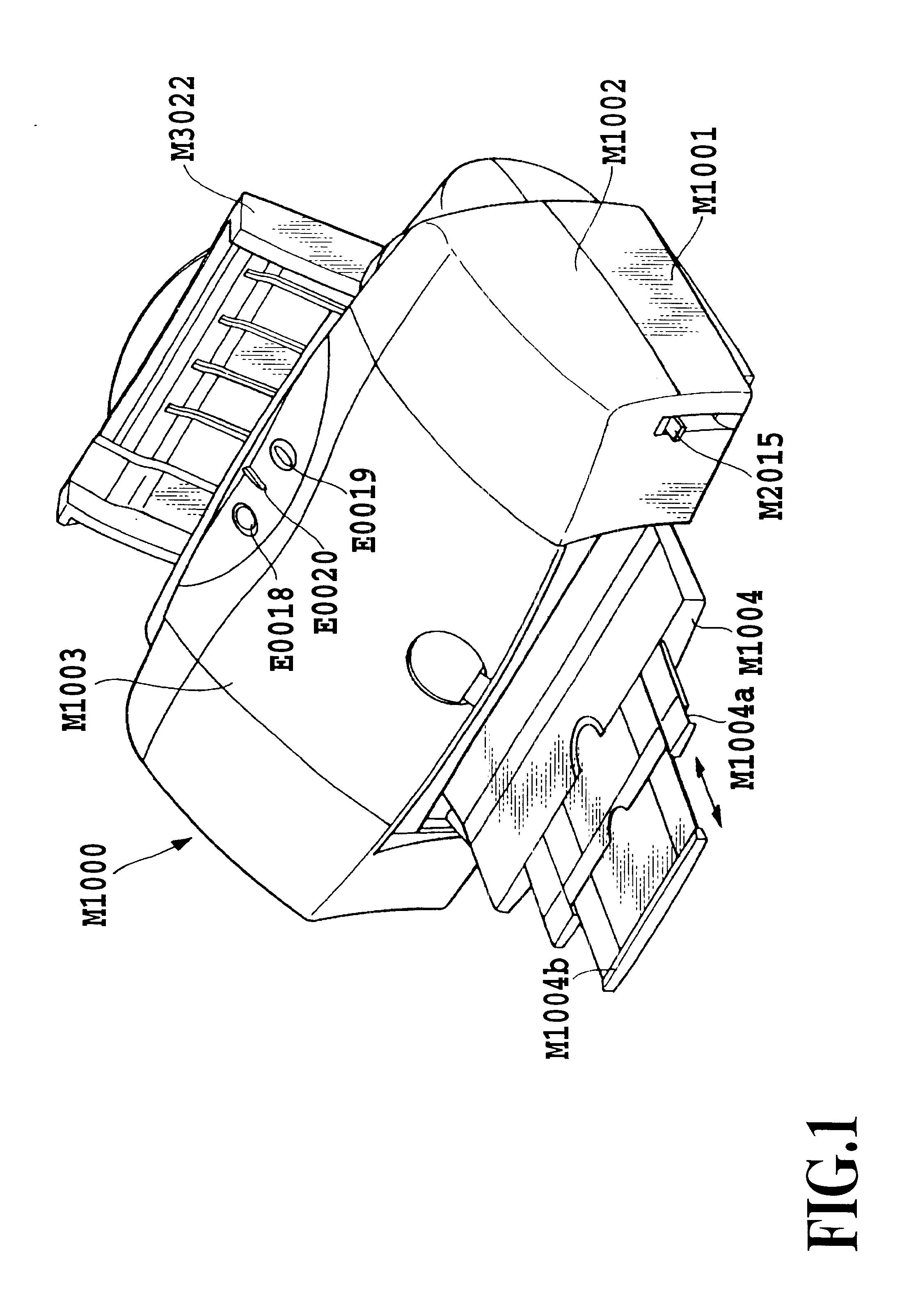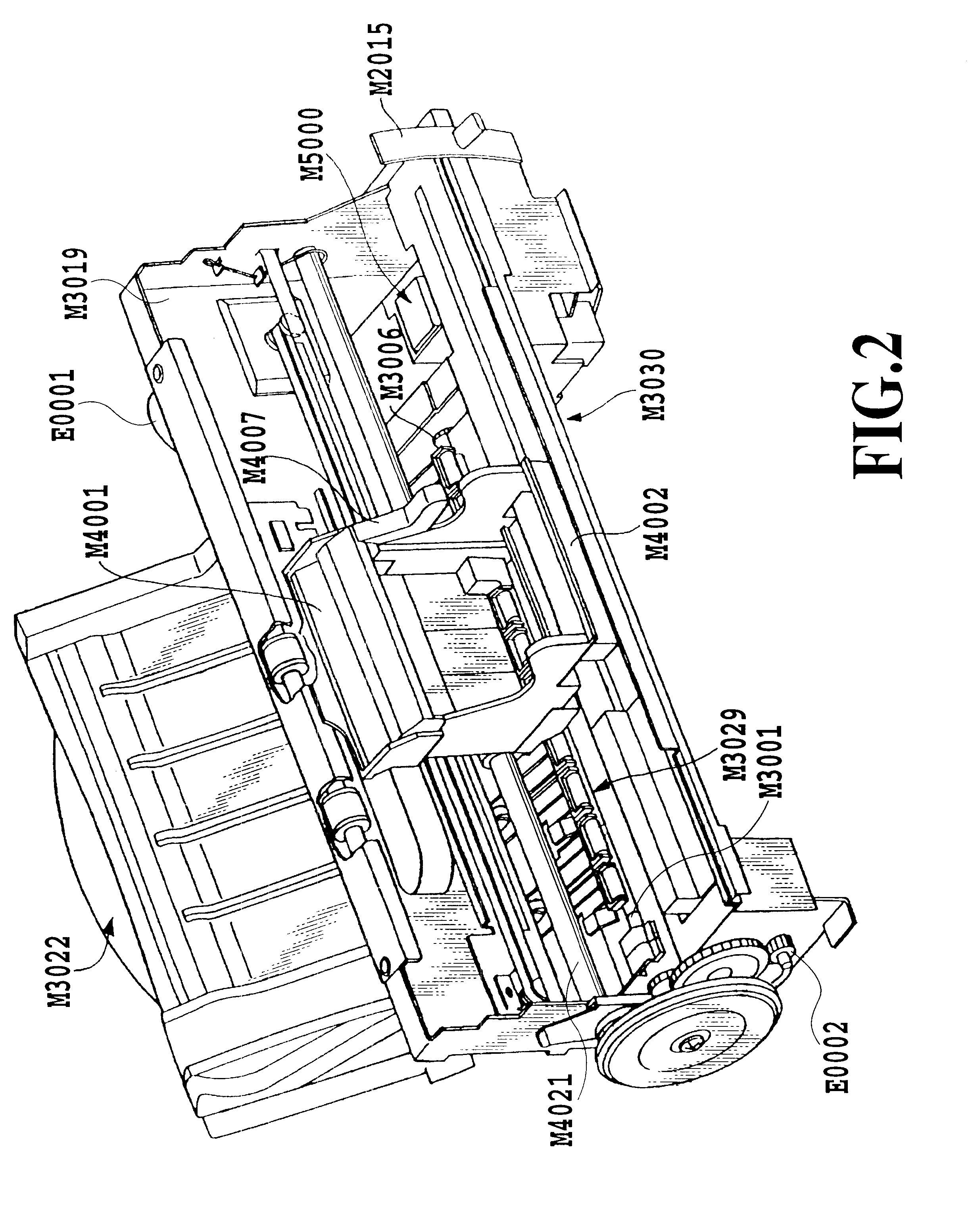Printing method and a printing apparatus
a printing apparatus and printing method technology, applied in the direction of printing mechanisms, visual presentation using printers, instruments, etc., can solve the problems of reducing the image quality in the form of density variations of printed images, elongating the print time, and affecting the image quality of the printed image, so as to prevent beading
- Summary
- Abstract
- Description
- Claims
- Application Information
AI Technical Summary
Benefits of technology
Problems solved by technology
Method used
Image
Examples
second embodiment
Next, the present invention will be described. This embodiment adopts 4-pass printing, and a covering ratio is calculated by also adopting the effect of the collective dot mask described in the above-mentioned Japanese Patent Application Laid-open No. 6-22106 (1994).
first embodiment
FIG. 14 shows a collective dot used in this embodiment, and printing is performed in pixel arrangement in a constitution unit of 4 dots in the main scanning direction.times.1 dot in the sub scanning direction. If it is assumed that plural dots adjoin each other like this, the overlapping areas of each dot are offset in the calculation of the covering ratio and thus, the covering ratio value becomes smaller. If a printing apparatus similar to the one used in the first embodiment is used also in this embodiment, the covering ratio of one collective dot is 64%. However, it is assumed here that each collective dot unit of m.times.n=4.times.1 does not adjoin each other. The first pass can be increased in the data printing ratio by the decrease in the covering ratio.
Since 4-pass printing is adopted in this embodiment adopts, the printing ratio is 25% in each print-scanning if data are equally divided. If printing is carried out by using the collective dot unit of 4.times.1 dots, the cover...
PUM
 Login to View More
Login to View More Abstract
Description
Claims
Application Information
 Login to View More
Login to View More - R&D
- Intellectual Property
- Life Sciences
- Materials
- Tech Scout
- Unparalleled Data Quality
- Higher Quality Content
- 60% Fewer Hallucinations
Browse by: Latest US Patents, China's latest patents, Technical Efficacy Thesaurus, Application Domain, Technology Topic, Popular Technical Reports.
© 2025 PatSnap. All rights reserved.Legal|Privacy policy|Modern Slavery Act Transparency Statement|Sitemap|About US| Contact US: help@patsnap.com



